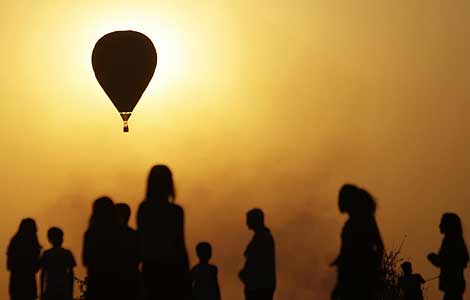Tibetan children in Beijing for free surgery
Updated: 2011-09-09 07:39
By Li Yao (China Daily)
|
|||||||||||
BEIJING - Fifteen children with congenital heart disease from the Tibet autonomous region arrived in Beijing on Thursday morning to receive free treatment.
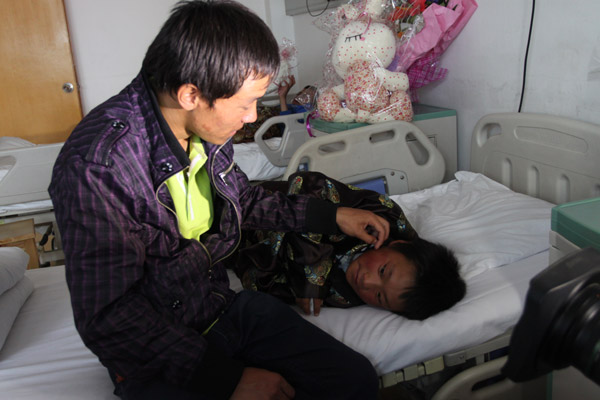 |
|
Namgyal, a 12-year-old boy from Tibet, chats with his teacher in a hospital ward in Beijing. Namgyal was one of 15 children with congenital heart disease who arrived in Beijing on Thursday to receive free treatment. [Photo / China Daily] |
The General Hospital of the Chinese People's Armed Police Forces will provide the medical services. Another group of 11 children from Tibet arrived on Wednesday.
The children, aged between 4 and 16, are the latest beneficiaries of a charity program launched in April by the hospital and the China Charity Federation to offer free heart surgeries to children from 1,000 poor families belonging to various ethnic groups.
They each have a parent traveling with them, except for four orphan boys.
Da Tsering, 12, has never seen his parents and lives with his 21-year-old uncle. The uncle, Tsering Tashi, accompanied him on the trip to Beijing, carrying a small suitcase with some clothes, simple toiletries and a roll of small dry bread made with barley.
Like many children on the trip, Da Tsering did not know he had a heart condition, until a medical team from the hospital ran tests at schools in Nagqu prefecture of Tibet two weeks ago and told him he would be going to Beijing for a free operation.
At the hospital, Da Tsering did not show any traces of being scared by the prospect of surgery. He said a classmate went on a similar trip last year and assured him he would be in safe hands.
Fond of playing football, the boy responded with a timid smile when asked if he will be a better player once he has a stronger heart.
"After the operation, I hope nothing will stop him from having a better future," his uncle said.
Two of Da Tsering's schoolmates came with him. Namgyal and Tsering Ragya are 12-year-old orphaned boys. Their teacher came to look after them.
Another boy, Tashi, 11, has lived at Deji Orphanage in Lhasa since he was 5. He learned about his heart condition from last summer's tests.
Tall and slim, Tashi looks older than his age. He likes playing basketball, and is quiet and shy most of the time.
Karma Yutso, 13, is in fourth grade at Wanquan primary school in Nagqu. Her mother, Bancuo, is a single parent taking care of five children aged between 4 and 15.
"I'm not able to deal with it on my own financially. Without the test two weeks ago, I wouldn't even have known about her condition," Bancuo said.
Liu Huiliang, director of the hospital's cardiology department, said children born in the high altitude of the Tibetan plateau are very susceptible to patent ductus arteriosus, a congenital heart disease.
The absence of regular medical screening and limited healthcare resources make things more difficult, Liu said.
According to Liu, the children will go through preliminary checkups and cardiological imaging to enable doctors to decide whether an operation is needed or whether a minimally invasive procedure will be sufficient.
"The cost can be as much as 20,000 yuan ($3,132) for each case," Liu said.
"The China Charity Federation covers 15,000 yuan for each child, and the rest will be taken care of by the hospital. The families will not be charged a single cent throughout their stay."
Deng Tongshan, vice-president of the federation, said there are at least 2 million children suffering from congenital heart disease in China, a number that increases by 120,000 every year. Fewer than 100,000 receive adequate treatment.
"Children of ethnic groups from poor households are under a double disadvantage in getting access to medical care. Such diseases will quickly drag a family down to its knees," Deng said.
So far, nearly 400 children have received treatment under the charity program. They have come from several regions, including Tibet, Ningxia Hui and Inner Mongolia autonomous regions, and Qinghai and Yunnan provinces.
- China to help companies investing abroad
- Foreign brands accused of cheating
- Singer apologizes for son's attack
- Babies born abroad may trigger fines
- Ministry: China to further facilitate investment
- State Council demands spill probe
- Little role of NATO in anti-terrorism
- Internet major source of rumors: poll
Hot Topics
Libya conflict, Gaddafi, Oil spill, Palace Museum scandal, Inflation, Japan's new PM, Trapped miners, Mooncake tax, Weekly photos, Hurricane Irene
Editor's Picks
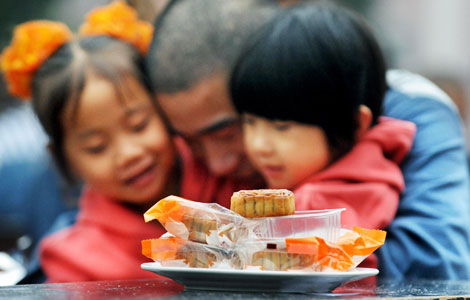
|
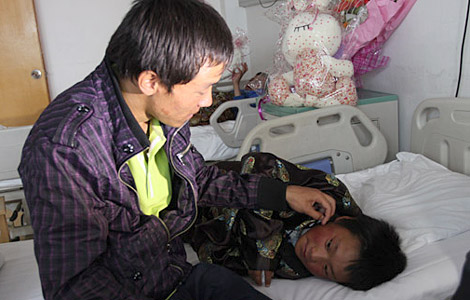
|

|
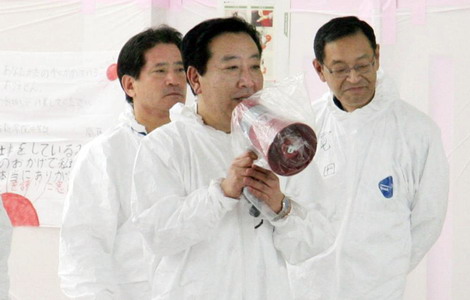
|

|

|



